Sick of resorts? There’s an alternative (and cheaper) way to stay in Fiji
It’s 4am. Bells ring out in the darkness followed by the slow beating of heavy drums. We stir, and my husband and I slip outside, uncertain of their significance. Had someone died? Was dangerous weather coming? Should we wake the kids? The high tide laps at the shore and above us in the remote Pacific, the heavens dance with stars. We can see no-one else, but then we hear it: the sound of voices rising through the night, a gentle hymn sung in Fijian, simple call to prayer.
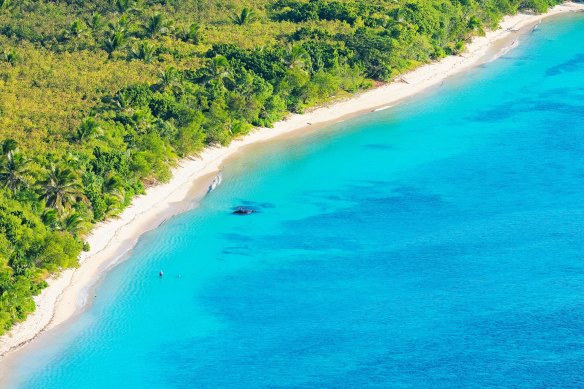
Nacula Island in the outer Yasawa Islands group.Credit: Alamy
Our young family of four are staying in Navotua village on the outer Yasawa island of Nacula in Fiji. The village, home to about 100 people, is part of a network of local communities in the Yasawas offering homestays.
However, visiting isn’t as simple as booking online and just showing up. We have to follow strict protocols during our stay, that cover everything from how we dress to what we pack. While most guidelines are simply cultural courtesies (covering up and not drinking alcohol), there’s one requirement that logistically feels daunting: all visitors need to present the village chief with a sevu sevu of kava root on arrival in the village.
It’s a non-negotiable part of the homestay, and if you’re used to a tropical welcome drink and cold towels on arrival at your resort, it’s a sharp contrast to have to bring the gift to your host instead. But the ceremony plunges us straight into village life. Luckily, sourcing kava root on the mainland turns out to be a simple three-minute detour to Namaka market just outside Nadi airport, with our driver helping us select a bushel that costs us $F75 ($51).
On arrival in the village, we present our sevu sevu to the chief by standing outside his house and chanting “dua dua dua”, and when we hear him return the greeting, we enter. We sit on the floor, he says a short blessing. Afterwards, we shake hands, and are officially welcomed to the village.
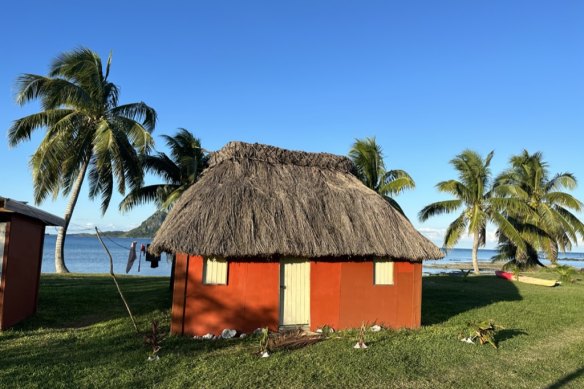
Our accommodation is in a one-room, bright orange thatched bure on the beach.Credit: Shaney Hudson
While we are initially nervous about travelling to the outer islands with young children (a five-hour boat ride, followed by a 45-minute fishing boat ride is a big ask of two small kids), the culture shock is brief for our eldest, presenting itself as boredom.
“The kids have nothing to do here,” he whinges on our second day.
“Yes, they do,” my husband responds.
“But what do they do?”
“They have each other.”
He takes it in, and then disappears up a tree with the local kids. He swims and splashes and races coconuts along the shoreline with his new friends. On the last day, he doesn’t want to leave.
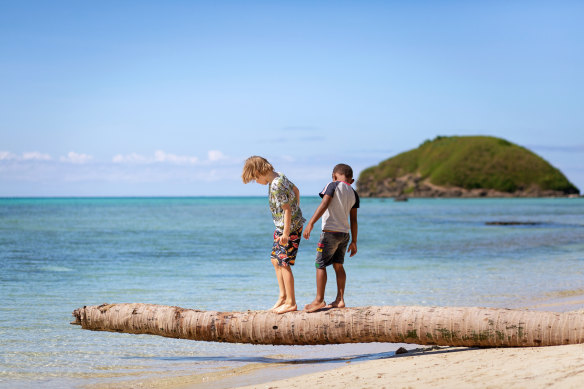
Playing with a local.Credit: Shaney Hudson
Our accommodation is in a one-room, bright orange thatched bure on the beach, with a toilet and cold-water shower in an adjacent hut. All home-cooked meals are included; each one prepared by a different family in the village. We never quite know where we are eating – instead, at a set time each day, small children come to fetch us for meals, proudly leading us hand in hand to their homes.
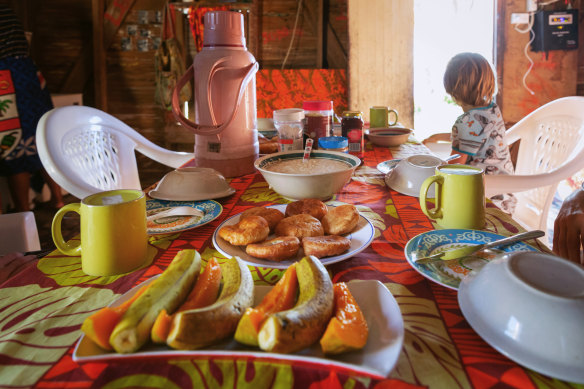
Meals are provided by the local community.Credit: Shaney Hudson
The dishes vary from spinach in coconut cream, to cassava root, fried fish and mussel curry, or rice, pot noodles and tinned sausage for dinner, with banana fritters, fried doughnuts, pancakes and fresh pawpaw at breakfast.
During our stay, we eat with 12 different families. We stickybeak at the catch the fisherman bring home. We visit the famous Sawa-i-Lau whistling sea caves, an aquatic cathedral that sits tantalisingly across the bay. My one-year-old plays with shells. My six-year-old makes new friends. My husband picks up his camera for the first time in years. Life slows down, and we exhale after a long, difficult year.
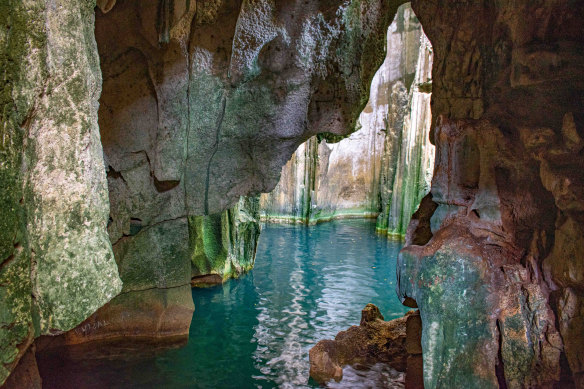
The Sawa-i-Lau caves.Credit: iStock
Of course, it’s not all idyllic. When I think my youngest has been collecting shells at low tide, I find him building a pile of corroded torch batteries long ago discarded onto the beach. There are only two options for disposing of rubbish on the island: bury or burn. We make an effort to take ours with us when we leave.
The village has limited means of income and is deeply impacted by the climate emergency, with a storm surge destroying one of their three guest bures during the pandemic. Our host tells us the storms here are more frequent than they used to be: the day’s catch is thinning out.
Overall, it’s brilliant experience, but also one that isn’t for everybody (especially if you like creature comforts like the internet, air-conditioning, hot water and alcohol). But like us, the other travellers staying in the village are here for the same reason we are – an alternative experience to staying in a resort, a genuine encounter with locals, and a chance to spend tourism dollars where they matter.
The writer travelled with the assistance of Tourism Fiji.
THE DETAILS
Fly
Fiji Airways offers daily flights from Sydney and Melbourne to Nadi. See fijiairways.com
Stay
Village homestays can be arranged through yasawahomestays.com Meals, accommodation and small boat transfers from the ferry to the local village from $F135 ($92) a night, with a minimum two-night stay. Our meals, accommodation and transfers to and from the ferry to the local village for a three-night stay for two adults, one child and an infant cost $F972 for three nights ($667). Accommodation is basic, and there are very specific terms and conditions around staying. Read up online before you go.
Both the Tavewa Seabus (primarily used by locals, departing from Lautoka Kings Jetty)(www.seabus.com.fj) and the Yasawa Flyer (southseacruisesfiji.com) (mainly used by tourists and departing from Port Denarau) travel to the Yasawas, arriving about the same time and are met by local village boats.
Be very clear when you transfer on which village you need to get to: the author ended up in the wrong village at first due to miscommunication.
Sign up for the Traveller Deals newsletter
Get exclusive travel deals delivered straight to your inbox. Sign up now.